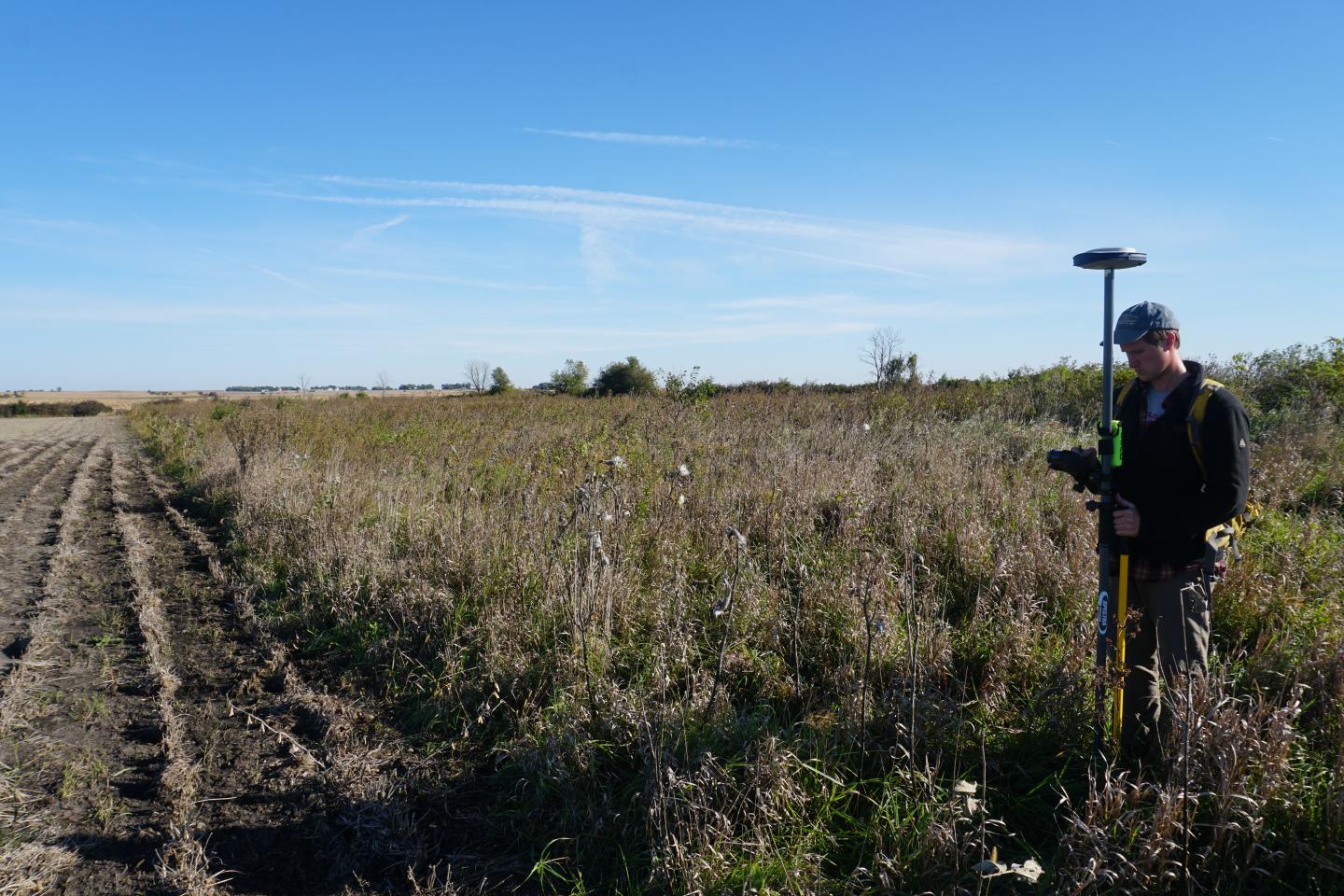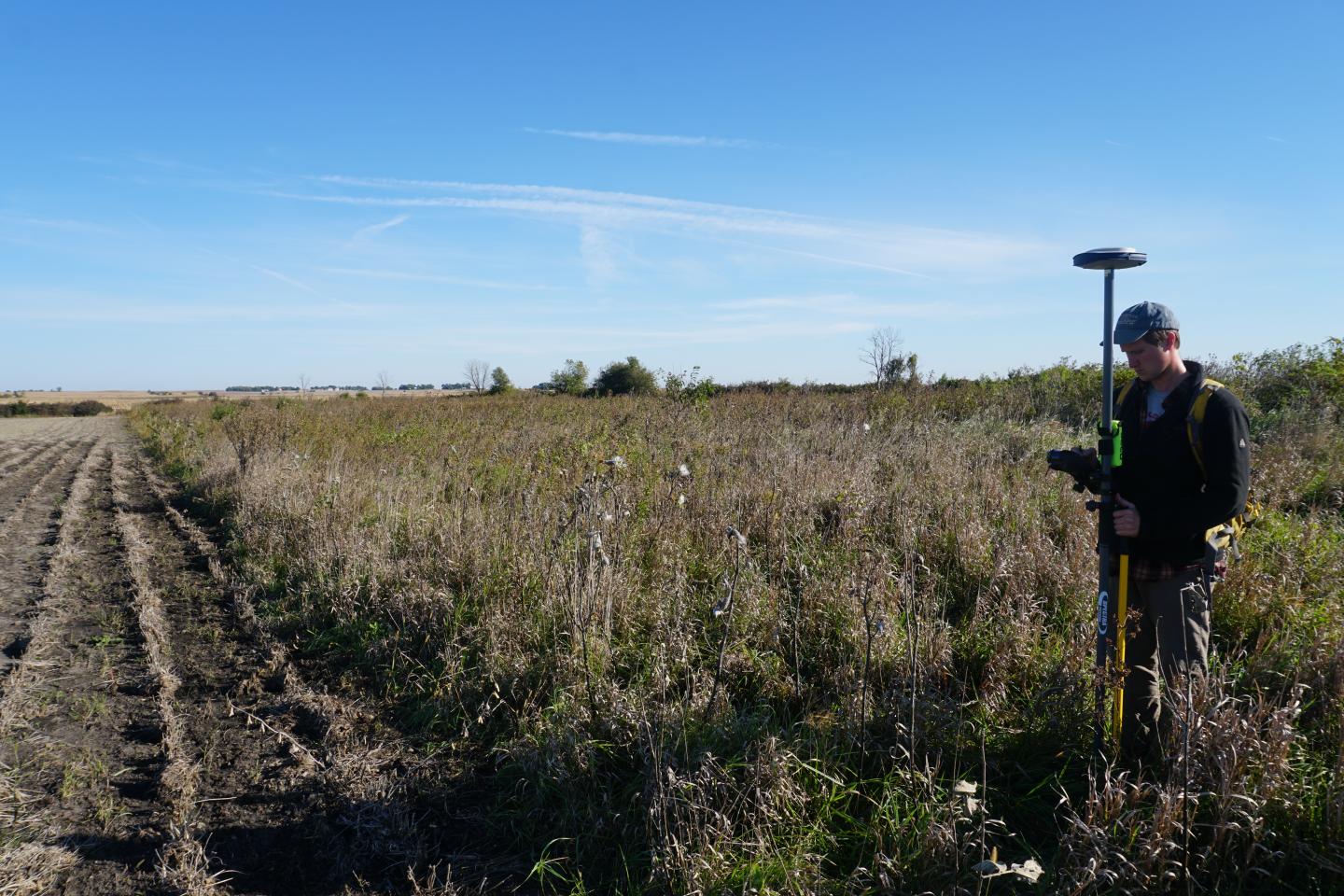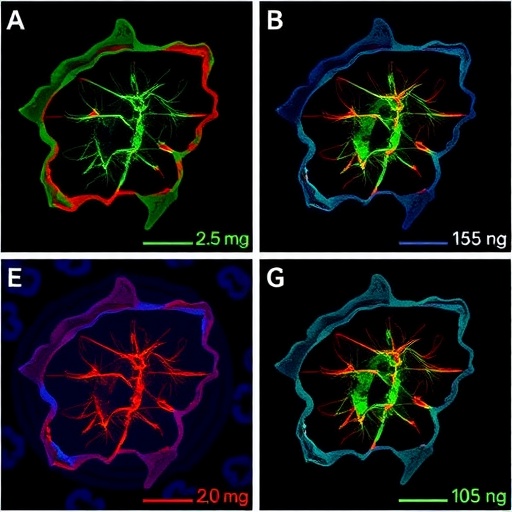
Credit: UMass Amherst
AMHERST, Mass. – Geologist and geochemist Isaac Larsen at the University of Massachusetts Amherst has received a five-year, $542,000 faculty early career development (CAREER) grant from the National Science Foundation to address basic research questions about soil production, soil erosion, agricultural landscape evolution and human impact in these areas.
The CAREER award is the NSF's highest award in support of junior faculty who exemplify the role of teacher-scholars through outstanding research, excellent education and integrating education and research with their institution's mission.
Larsen and colleagues will study Midwest soils where remnants of the native prairie still exist, specifically in Iowa, Illinois, Minnesota, Nebraska and South Dakota. The overall topic is understanding rates at which natural soils are produced compared to how much is eroded by human intervention.
He says, "I think we'll be able to produce the first quantitative estimates of soil mass balance, production rates and soil lifespan in landscapes where soils form from glacial sediment, which are largely unknown at present. There is virtually no information on rates of soil formation in agricultural landscapes, yet these are some of the most fertile regions of the world."
Larsen adds, "In the time since farming began, you can measure the elevation difference between native prairie and farmed lands. Knowing the thickness of soil, we can estimate how long it will last, that is how long before it is gone if erosion rates continue the way they have. It's a geomorphology problem. We'll be asking how the landscape is evolving, at the same time we incorporate the human influence since agriculture began in this area in the mid-19th century."
Soil erosion reduces soil fertility, Larsen points out, resulting in diminished agricultural production that threatens food security. The cost of soil erosion in the U.S. reaches tens of billions of dollars a year and while the need to conserve soil is recognized, major uncertainties remain about how big the erosion problem is. Erosion is influenced not only by agricultural activities such as plowing and tilling but topography such as the steepness and shape of hills.
This research will combine several tools such as field surveying, analysis of cosmogenic nuclides, LiDAR-based topography and landscape evolution modeling. In addition to comparing measurements between prairie and agricultural fields at about 40 sites, Larsen and colleagues will use a sophisticated geochemistry lab at UMass Amherst to analyze cosmogenic radio nuclides collected at the sites to determine the long-term rates of erosion before European settlement.
Long-lived cosmogenic radionuclides are formed when cosmic rays that continually bombard the Earth smash into oxygen atoms and produce a rare isotope called Beryllium 10 (10Be), Larsen explains. "In areas where erosion is taking place rapidly, there will be little 10Be because it's lost. But soils in slowly eroding areas accumulate more 10Be."
The analysis process involves dissolving soils and separating the 10Be for analysis in an accelerator mass spectrometer in which it is possible to measure individual 10Be atoms. These concentrations will be used to quantify the depth of soil loss per year during the period that pre-dates agriculture in the Midwest.
The researchers will then use soil loss measurements to calibrate a numerical landscape evolution model using high-resolution LiDAR to predict, at the landscape scale, how much soil has been lost as a result of topography scaling up from the field sites.
Larsen says this work will support one Ph.D. student and many undergraduate students over the five years, as they collect field samples and follow it up with lab work on those samples. They will learn the about native soils and agriculture in the U.S. This education plan will train the next generation of scientists in fieldwork and geochemical data analysis to make landscape scale predictions of the magnitude of soil loss, the geochemist notes.
###
Media Contact
Janet Lathrop
[email protected]
413-545-0444
@umassscience
http://www.umass.edu
############
Story Source: Materials provided by Scienmag





